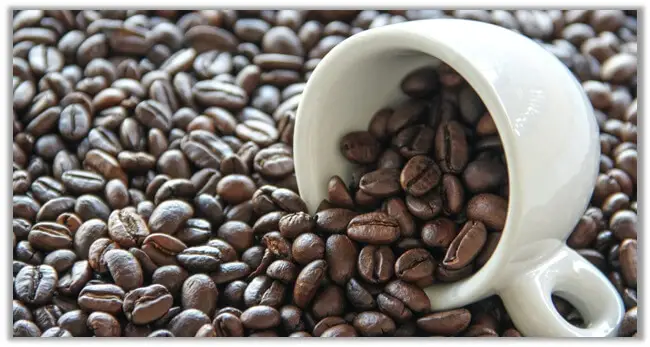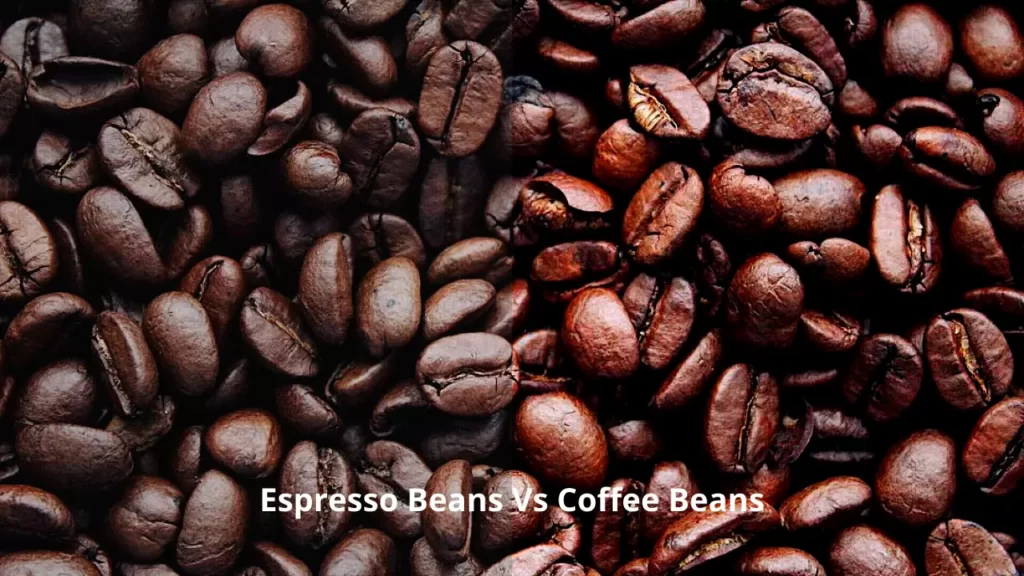Last Updated on October 12, 2022 by Timothy Byron Smith
The coffee community has been thrown into the espresso beans vs coffee beans debate ever since the Italian espresso has taken over the rest of the world by storm. It is either the old-fashioned drip coffee or the instantly pulled espresso shot, both of which stand distinct in every way possible.
If you are someone who prefers to make their coffees at home, then chances are you must have quite the experience and knowledge. If you are a coffee enthusiast, you would know about the best coffee brands and drip machines. Or if you like the stronger tasting espresso, you would know about the consistency and precision required to pull the perfect shot.
But hold up a minute! In this espresso vs coffee debate, what if we told you there was something primarily common: THE BEANS! If you had the misperception that the espresso and coffee beans are different, we are sorry to burst your bubble. We are going to tell you exactly why these beans differ.
Espresso Beans Vs Coffee Beans
So if you are still surprised with what you just read, let us break it down to you. All types of coffee, whether it be an espresso or a latte, originate from the same Robusta or Arabica beans. But then you must be wondering why are espresso and coffee beans sold separately? Don’t fret, we will get right down to clearing your confusion!
Are Espresso and Coffee Beans the Same?
Let’s begin with the origin. The raw espresso beans are initially just coffee beans so you can say at some point they both are the same. But what makes the two so different?
Difference Between Espresso And Coffee Beans

The beans get their discretion from the roasting method! The subsequent processes are what allow the initially similar beans to give different beverages. We’ll walk you through the differences in the roasting and brewing processes.
Roast Blend
The usual coffee beans are light or medium roasted, up till the first crack, giving it a lighter color. But the espresso beans are roasted for a longer period till the beans pass the second crack. This is how the espresso has a darker tone.
Size
If you make espresso at home, you would know that espresso beans are much more finely ground than regular coffee beans. This is because the espresso is made with hot water pressurized through the ground coffee at a very high speed, giving you a shot.
Brewing Method
Espresso lovers would know that its brewing method is none less than an art. It requires a semi-automatic or fully-automatic espresso machine to which you can add your finely ground espresso and then brew a shot at the push of a button. The machine will adjust the speed and temperature at which the hot water is forced through the grind. Depending on the number of features an espresso machine offers, you may modify the settings to test different varieties of espresso.
Regular coffee can be made in a number of ways. You can make it in a coffee pot or use a French press. If you want to save yourself from manual work, you can also use a drip machine.
Taste
The regular coffee tastes sweet and a bit acidic. Since the espresso beans are roasted for a longer time, the acidity subsides, allowing a bitter and bolder taste to emerge.
Caffeine Level: Espresso Beans Vs Coffee Beans
If you think about the taste, you might mistake an espresso as having a greater caffeine content than coffee. But if you compare the servings of both drinks, you’ll be surprised to find out the truth. An average serving of coffee has 8 ounces that are equal to approximately 85-185 milligrams of caffeine.
On the other hand, a single ounce of espresso that is usually a shot has somewhat 64-75 milligrams of caffeine. This way, a simple cup of coffee means you are taking in more caffeine than an espresso.
Is Espresso More Caffeinated Than Coffee?
If you really want to know the answer to that, you will need to get down to some math. As told already, a single ounce of espresso has something around 64-75 milligrams of caffeine concentration. But if you compare this value to a single ounce of coffee, you would realize that it contains something as little as 12 milligrams of caffeine.
It is only because coffee is never consumed as just an ounce, that the coffee is considered to have more caffeine as compared to a single or even double espresso shot.
Can You Use Coffee Beans for Brewing Espresso?
Now that you understand that coffee and espresso beans are the same, you would also understand that you can use coffee beans to brew espresso. However, using the usual light or medium roast won’t do the job.
Which Coffee Beans are the Best for Espresso?
The best kind of coffee beans that can be used for espresso is dark roasted ones. We have taken the liberty to pick out a few coffee brands that will give you a flavorful espresso
- ILLY – The best Italian Coffee for Espresso
- Stumptown Hairbender Espresso beans
- Intelligentsia Black Cat Espresso Blend
- Lavazza
FAQs
Can you use dark roast coffee beans for espresso?
Dark roast beans are best suited for espresso as it gives a less acidic and more bitter taste. Dark roast coffee beans are also beneficial for health.
Can I use regular coffee beans for espresso?
Technically you can use any sort of coffee beans to make an espresso. But a genuine espresso shot is made with dark roasted coffee beans. So if you opt for coffee beans, select a darker roast to give you a better flavor.
Wrapping it up
So now you know the difference in espresso beans vs coffee beans. They both might start as the same beans but part their ways when it comes to roasting. The espresso roast is darker and longer than the regular coffee, giving it a less acidic but more bitter taste. Whether you opt for a drip coffee or an espresso, make sure to enjoy its true essence.

